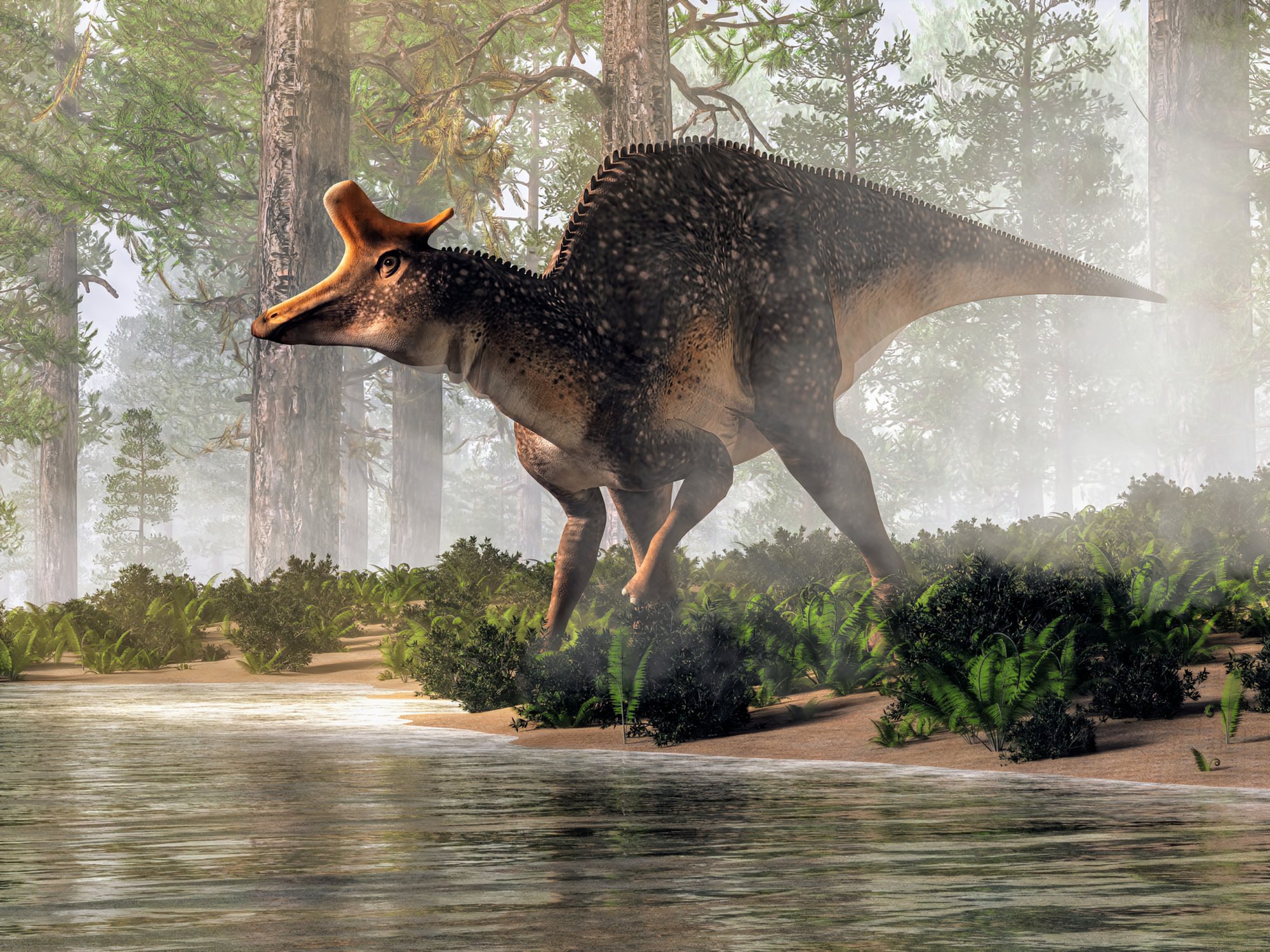The most complete dinosaur fossil found in Mississippi, which state officials consider “incredibly unusual,” has been 85 percent buried since its discovery in 2007.
Paleontologists have identified the specimen as a hadrosaur, a family of duck-billed, herbivorous dinosaurs that lived more than 82 million years ago. The hadrosaur family includes at least 61 identified species, with hundreds more likely to have once roamed the Earth.
Dinosaur remains in Mississippi
Researchers have unearthed parts of the specimen’s vertebrae, forearm, feet and pelvic bones. Extracting the rest of the fossil from the site near Booneville in northeastern Mississippi, however, has proven challenging.
“This thing has been sitting for a while because we didn’t have anyone to work on it,” said James Starnes, an official with the state geological bureau.
3D method for forensic bone analysis
For nearly two decades, the specific species of this hadrosaur fossil remained unknown. Researchers are now using a 3D method of forensic bone analysis called geometric morphometrics to solve the mystery before the fossil is fully excavated.
Derek Hoffman, a geology graduate student at the University of Southern Mississippi (USM), analyzes the hadrosaur remains using this method. “What geometric morphometrics does is it takes a shape analysis approach,” he explained.
This method determines the key features or ‘landmarks’ of a given bone sample and compares their distances and proportions using complex statistical models to identify differences and similarities with known bones.
Mississippi Dinosaur Fossils
Hoffman’s work is complicated by the fact that some pieces of the fossil are in the hands of private collectors. His research focuses primarily on the bones held by the Mississippi Museum of Natural Science.
“We have quite a few vertebrae,” said George Phillips, the museum’s curator of paleontology. “We have one humerus. We have one ulna. The ulna is the back of the forearm. We have a number of foot bones. And then we have the pubic bone.”
The ulna of an adult hadrosaur is about two feet long, and the humerus is about a foot and a half. The foot bones of a complete adult hadrosaur can weigh more than 50 pounds. However, the dinosaur’s skull, the most unique feature for distinguishing hadrosaur species, has not yet been found.
Hadrosaur species
Different hadrosaur species evolved a wide variety of crests on their duckbill heads, including structures such as a cock’s crest. Paleontologists still debate the biological purpose of these features, but their diversity has contributed to the recorded diversity of the hadrosaur family.
Hoffman focuses on the dinosaur’s pubis, a bone from the front of the pelvis, as the next best choice for identifying the fossil’s species.
While differences between the pubic bones of hadrosaur species are often too subtle for the naked eye, rigorous mathematical approaches such as geometric morphometrics can reveal hidden differences. Using these methods, Hoffman hopes to narrow down the potential species of this Mississippi fossil.
The hadrosaur was probably about 7.5 to 8 meters (25 to 26 ft) long and about 5 meters (16 ft) tall when sitting on its hind legs.
Well-represented dinosaurs in the fossil record
Researchers believe the hadrosaur lineage began in North America and eventually migrated globally, with fossils found in Asia, South America, Europe and North Africa. “They are without a doubt the best-represented dinosaurs in the fossil record,” Hoffmann said.
Hadrosaurs, whose name comes from the Ancient Greek for “sturdy lizard,” ranged from about 2.2 to 4.4 tons. Examples of hadrosaur species include Parasaurolophus, known for its long, backward-curving crest, and Edmontosaurus, which had a crest made of soft tissue like a rooster’s.
Starnes described the 2007 hadrosaur discovery near Booneville as “incredibly unusual.”
“We just don’t have a lot of skeletons. We have bits and pieces, but no skeleton,” he said. Despite the nearly two decades it has taken to excavate only a fraction of the fossil, he hopes the project will eventually be completed.
—–
Like what you read? Subscribe to our newsletter for engaging articles, exclusive content and the latest updates.
Check us out on EarthSnap, a free app from Eric Ralls and Earth.com.
—–
